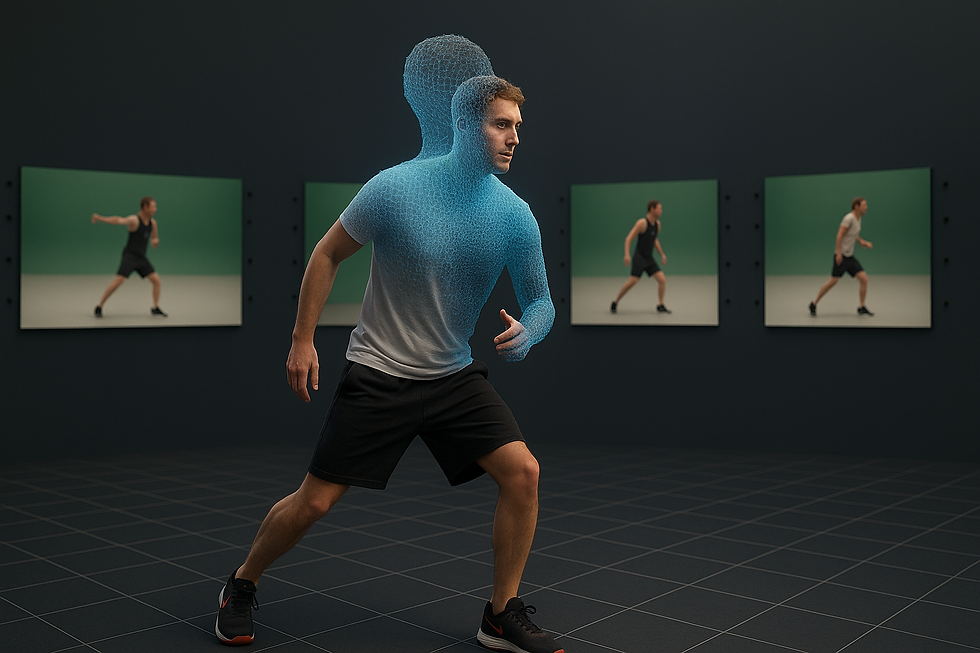10 Secrets to Designing Accessible Events Using Event Tech
- Jan 10
- 3 min read

Creating events that are inclusive and accessible isn’t just the right thing to do: it’s a game changer for attendee experience and event success. With the right event technology, you can design spaces that accommodate everyone, ensuring comfort, safety, and enjoyment for all. Here are ten tech savvy secrets to achieving accessibility excellence.
1. 3D Navigation for All: Real time Routes for Attendees with Mobility Challenges
3D navigation tools, like geolocated maps that integrate into immersive wayfinding apps, empower attendees to find accessible routes in real time. These tools can guide users around obstacles, highlight lifts, ramps, and step free pathways, and ensure everyone can move through the event with ease. By incorporating detailed overlays and route updates, these tools provide options suitable for all attendees, enhancing their independence and confidence.
2. Pre Event Accessibility Checks: Digital Twins Spot Potential Barriers
Digital twins allow event producers to create a virtual replica of their event environment, with millimetre accuracy. By simulating attendee flow, you can identify pinch points, evaluate ramp gradients, and locate areas where additional signage or support might be needed before the event even begins. These simulations can also test various scenarios, such as emergency evacuations, to ensure all attendees can navigate the space safely and efficiently.
3. Custom Seating Options: Plan Spaces for Wheelchairs and Companions
Seating arrangements shouldn’t be one size fits all. Use pre visualisation tools to identify and allocate accessible seating that accommodates wheelchairs, companion seats, and any additional spacing requirements. Customisable seating maps ensure every guest has a comfortable view and experience. Additionally, these tools can help plan for accessible pathways to seating areas, avoiding unnecessary barriers or congestion.
4. Better Line Management: Predict and Manage Queues
Long queues can be a challenge for attendees with mobility or stamina issues. Queue management tools powered by data modelling help predict wait times and crowd flow, enabling you to create more accessible queuing systems or implement virtual queue options. This technology can also allow attendees to reserve their place in line via mobile apps, reducing physical strain and improving overall satisfaction.
5. Inclusive Visuals: Ensure Signage and Lighting Are Optimal
Poorly designed signage and lighting can exclude individuals with visual impairments. Use a digital twin to preview your event space and test placement, font sizes, contrasts, and lighting setups to ensure everyone can navigate the venue effortlessly. Incorporating high contrast designs and clear wayfinding symbols in the planning stage ensures that visual cues are effective for all attendees.
6. Quiet Zones: Designate and Promote Sensory Friendly Areas
For attendees with sensory sensitivities, quiet zones are essential. Pre visualisation tools can help you plan and showcase these spaces on event maps, ensuring they are easy to find and properly equipped with low lighting, noise reducing materials, and calming décor. Including information about these areas and a preview of their location and design in pre event communications can help attendees plan their visit with confidence and reduce sensory overload during the event.
7. Real Time Accessibility Updates: Adapt to Changing Needs
Use event apps to provide real time updates about accessibility features during your event. Whether it's notifying attendees of lift outages, rerouting paths due to unexpected obstacles, or highlighting last minute changes to quiet zones, staying responsive ensures every attendee feels prioritised and supported.
8. Inclusive Restroom Mapping: Identify and Share Accessible Facilities
Accessible restrooms are a cornerstone of event inclusivity. Use mapping tools to pinpoint their locations and integrate this information into your event app or digital twin. Include additional details, such as proximity to lifts or ramps, for seamless navigation. Highlighting features like baby changing stations or gender neutral options ensures inclusivity for a broader audience.
9. Interactive Pre Event Tools: Virtual Walk Throughs for Additional Needs
Virtual walk throughs give attendees the chance to explore the venue before arriving. For those with additional needs, this preview reduces anxiety and helps them plan their visit, whether it’s identifying the nearest accessible entrance or understanding the layout of the space. These tools can also be used to provide specific accessibility instructions tailored to individual needs, fostering a more personalised experience.
10. Feedback Loops: Use Tech to Gather Accessibility Data from Attendees
Accessibility is an ongoing journey, and attendee feedback is invaluable. Use post event surveys or real time feedback apps to collect data on accessibility features. Analyse the responses to understand what worked and where you can improve for future events. This data driven approach ensures continuous enhancement and demonstrates your commitment to inclusivity.
Final Thoughts
Accessibility isn’t just about meeting standards; it’s about exceeding expectations. By leveraging event technology thoughtfully, you can create an environment where everyone feels welcome and valued. From virtual walkthroughs to real time updates, these secrets are your blueprint for accessible event success. No matter the size of your event, inclusivity can be your superpower.




Comments